The British Museum is FULL of amazing artifacts from all throughout history. If there is a specific time period you’re interested in, there is probably a large exhibit with hundreds (if not thousands!) of artifacts for you to enjoy. Best part? It’s free!
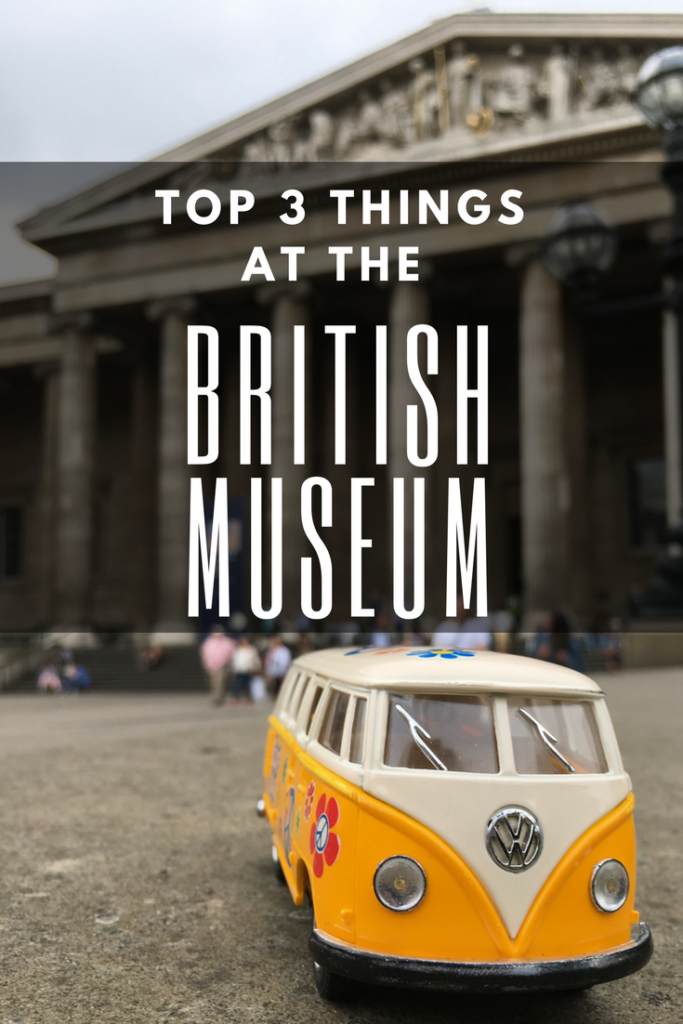
Getting to the British Museum:
Getting to the British Museum is fairly simple. The closest tube stop is Russell Square. But you can also get to the British Museum from the Goodge Street, Tottenham Court Road, or Holborn Stations. Though, from those you’ll have quite a ways to walk unless you take a local bus as well. From the Russell Square stop you will walk diagonally across Russell Square (a large garden/green space as you’re exiting the tube station) then head Southeast from the square until you get to Great Russell Street where the museum is located! Luckily, London has very good signage so make sure to look for signs every few blocks that will show you exactly which way to go to get to the museum. The signs will also have maps to look at as well.
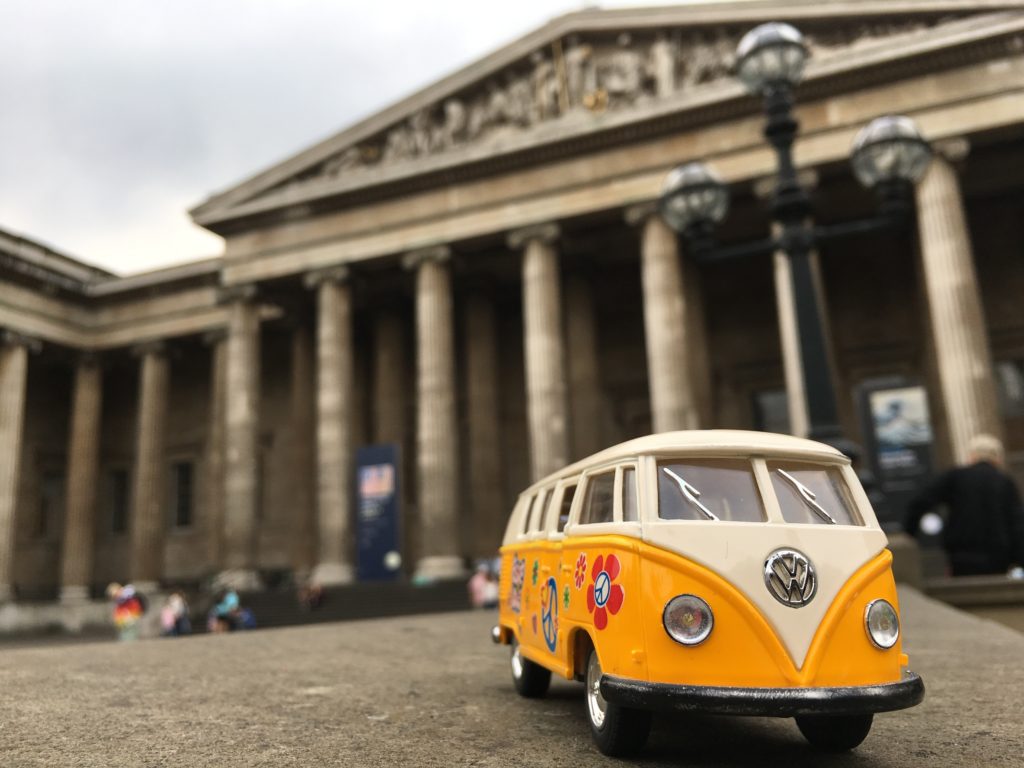
What to See at the British Museum:
While there are so many things to see at the British Museum, we suggest using Rick Steves Audio Europe App and downloading the track for the British Museum. He will take you through the highlights of the museum. It will take about an hour to get through his tour. If you’re extra pressed for time, we think the following things are the best highlights of the British Museum.
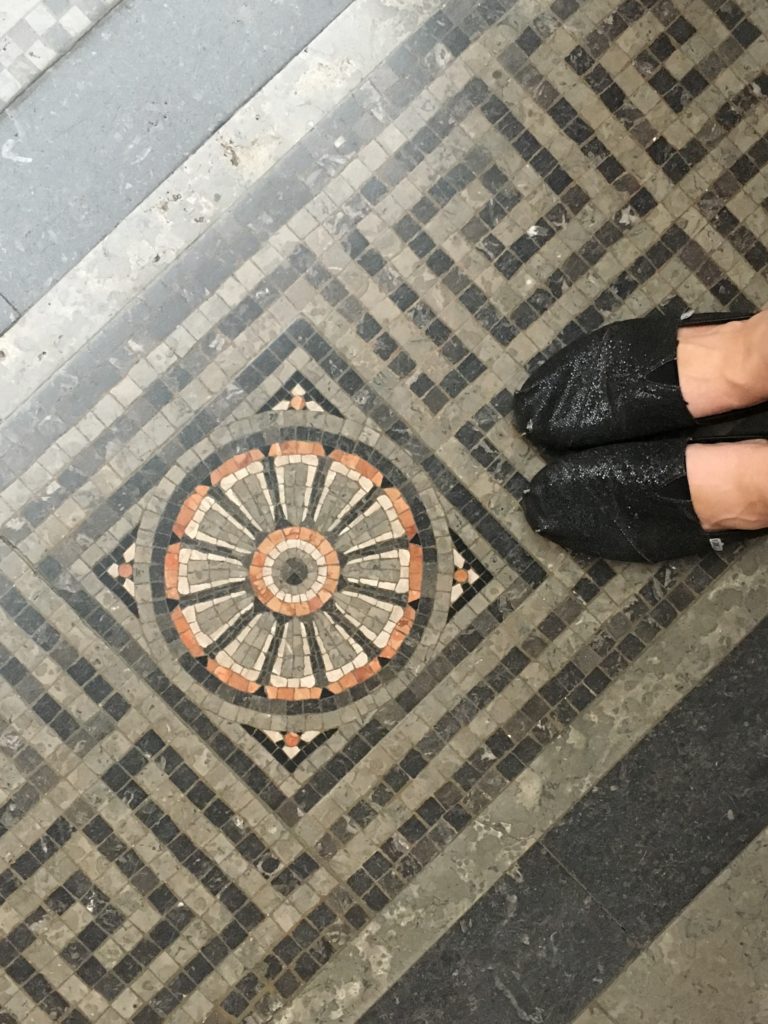
Rosetta Stone:
This is probably one of the most famous artifacts in the entire museum. When it was discovered in the late 1700s, it made it possible for archaeologists and scientists to crack the code to ancient languages. Be prepared for crowds as you look at this artifact. You may have to wait patiently in order to get a good glimpse or photo of it.
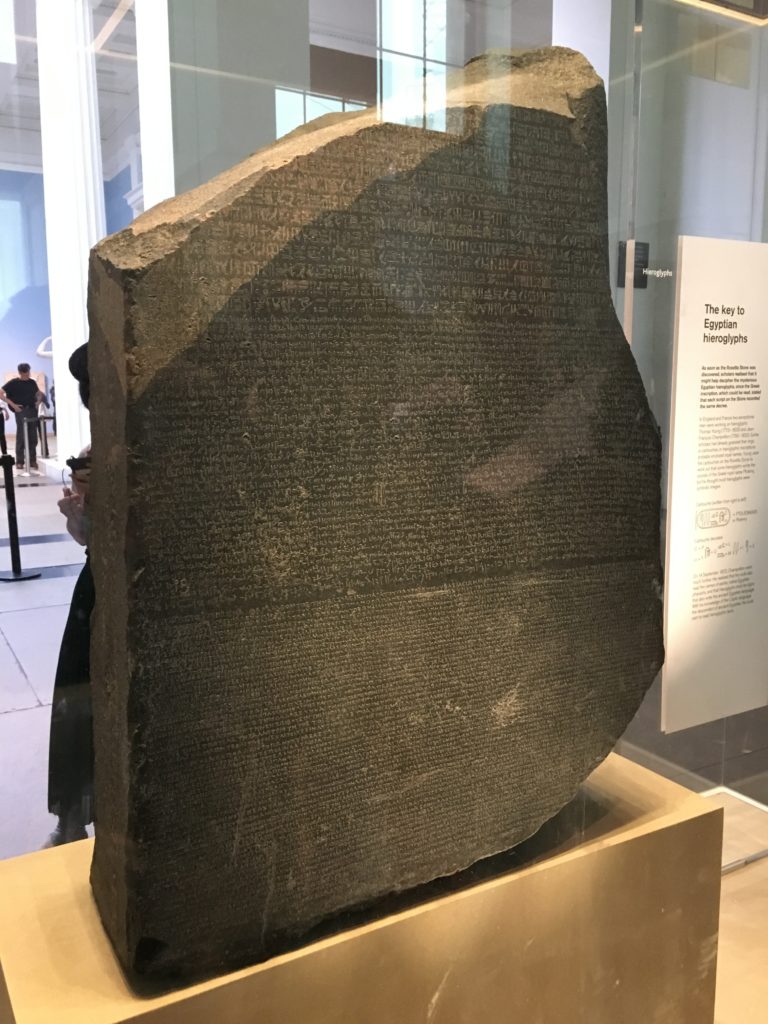
The rest of the Egyptian exhibit is also quite amazing. Make sure you spend some time looking around this time period. Rick has some great info on some of the most interesting artifacts in this section.
Ginger and the Mummies:
Up in the mummy rooms, you will find Ginger or the Gebelein Man. It is a very well preserved person that is thousands and thousands of years old. Scientists nicknamed him Ginger because of his red hair. There are also a TON of mummies in this section of the British Museum. If you’re into mummies make sure you spend some time here.
The Elgin Marbles and the Pediment Sculptures from the Parthenon:
One of the main reasons we came to the British Museum was to see pieces of the Parthenon so we could complete our Parthenon experience from last summer. It was very cool to see the rest of the artifacts from the Parthenon that we didn’t get to see while we were in Greece. There is even a whole section in this part of the museum with pamphlets that talk about why it’s ok for the Brits to continue to house these artifacts. It was very interesting.
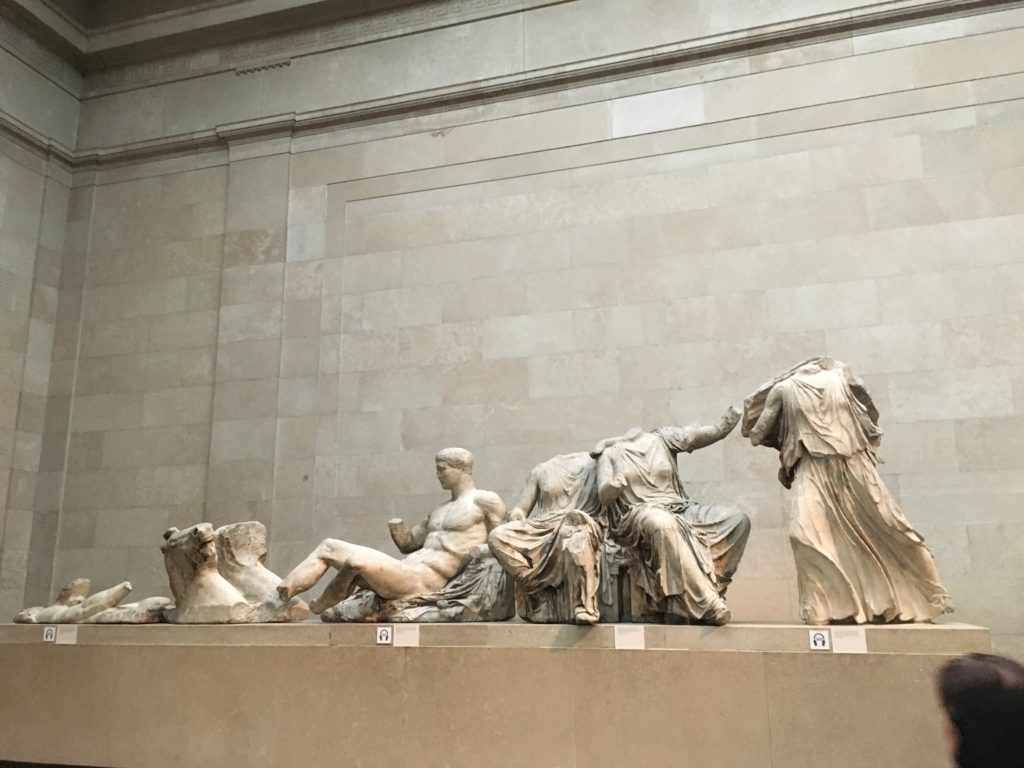
Sum Up:
The British Museum is a cool experience if you’re into anthropological history. If you have a specific time period of interest, it could be a fantastic experience for you! For not as fascinated people like us, we enjoyed listening to Rick Steves Audio Europe Guide for the British Museum (it’s free!) because it gave us a good overall view of the highlights of the museum without making us feel overwhelmed. There is an audio guide that you can pay for at the museum though if you’d like. There is also a map you can purchase but we found that it was easy enough to follow Rick. The British Museum is free to enter but it usually has an early-ish closing time. Make sure to check the hours on their website here and go on one of the evenings it is open later.




